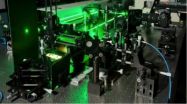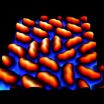(Press-News.org) Using a pain clinic as a testing ground, researchers at Johns Hopkins have shown that a management process first popularized by Toyota in Japan can substantially reduce patient wait times and possibly improve the teaching of interns and residents.
In a report on the pilot study, published online Sept. 9, in Pain Medicine, the researchers adopted the so-called "Just-in-Time" training and inventory process used now by many manufacturers and service industries to stem waste and keep complicated operations from bottlenecking.
"We realized that a significant amount of time linked to the practice of having residents-in-training see patients in the pain treatment center at the Outpatient Center was wasted and could be reduced by having patients' records previewed by residents and discussed with attending faculty the day before appointments," says Kayode Williams, M.D., M.B.A., medical director of the Blaustein Pain Treatment Center at The Johns Hopkins Hospital. That kind of transfer and sharing of information, he says, gives residents what they need in a timely way. The new process reduces waits and avoids overtime, because residents, attending faculty members and patients spent less time waiting for each other to get up to speed.
For the project, two attending faculty members assigned cases to residents the day before the patient visit. The residents reviewed each case and discussed it with the attending physician before each clinic session. Processing times for 504 patient visits were assessed over a total of four months.
Just-in-Time methodology exploits the idea that processes can be streamlined and sped up if important resources are available when they are needed. In the case of car production, for example, long-term storage of inventory and parts wasted time, money and space, and created bottlenecks on the assembly line. In the pain center, the attending physician's time and availability were identified as the sources of the holdup. Just-in-Time methods call for removing the logjam, so Williams and a team that included faculty members from the Johns Hopkins Carey Business School sought ways to reduce and streamline the attending physician's workload.
After the new method was implemented, the investigators estimate that the investment of 25 to 42 minutes by the attending physician in advance of the clinic hours resulted in a 175-minute reduction in total patient waiting time and a 28-minute reduction in overtime operations.
Not only did patients wait for less time, but residents were better prepared to treat patients, notes study co-author Maqbool Dada, Ph.D., a professor in the Carey Business School. "This results in more on-time performance, and the clinic faculty does not feel pressure to shorten patient interactions, since fewer patients are delayed," he explains.
An informal survey of the residents involved in the project indicated that they felt more confident when interacting with patients as a result of the preprocessing conversation, and they believed that their learning was enhanced by the approach. Surprisingly, says Williams, the attending physicians also noted that they were more confident when dealing with the patients and that the reduced congestion in the system made the day flow more smoothly.
Williams notes that the findings could be used to streamline patient flow in other clinical settings. Similar strategies could be used to improve patient hand offs between clinicians in inpatient hospital settings.
Senior author John Ulatowski, M.D., Ph.D., M.B.A., of the Johns Hopkins University School of Medicine cautioned that more studies are needed to learn if the method improves patient satisfaction, increases the quality of teaching and lends itself to broadscale use in teaching hospitals.
INFORMATION:
All work is attributed to this department and institution. Support was provided solely from institutional and/or departmental sources.
Article:
Applying JIT Principles to Resident Education to Reduce Patient Delays: A Pilot Study in an Academic Medical Center Pain Clinic
http://onlinelibrary.wiley.com/enhanced/doi/10.1111/pme.12543/
For more information:
http://www.hopkinsmedicine.org/pain/blaustein_pain_center/physicians/williams.html
Media Contact: Lauren Nelson
410-955-8725; lnelso35@jhmi.edu
Helen Jones
410-502-9422; hjones49@jhmi.edu
Patients waiting too long to see doctor? Try 'just-in-time' management methods, researchers urge
2014-09-16
ELSE PRESS RELEASES FROM THIS DATE:
Study on global carbon cycle may require reappraisal of climate events in Earth's history
2014-09-16
MIAMI – A recent study of the global carbon cycle offers a new perspective of Earth's climate records through time. Scientists at the University of Miami (UM) Rosenstiel School of Marine and Atmospheric Science suggest that one of the current methods for interpreting ancient changes in the concentration of carbon dioxide in the atmosphere and oceans may need to be re-evaluated.
The UM Rosenstiel School researchers measured the abundance of carbon-12 and carbon-13 isotopes in both the organic matter and carbonate sediments found in a nearly 700-meter marine sediment core ...
UCI team is first to capture motion of single molecule in real time
2014-09-16
Irvine, Calif., Sept. 16, 2014 – UC Irvine chemists have scored a scientific first: capturing moving images of a single molecule as it vibrates, or "breathes," and shifts from one quantum state to another.
The groundbreaking achievement, led by Ara Apkarian, professor of chemistry, and Eric Potma, associate professor of chemistry, opens a window into the strange realm of quantum mechanics – where nanoscopic bits of matter seemingly defy the logic of classical physics.
This could lead to a wide variety of important applications, including lightning-fast quantum computers ...
Making quantum dots glow brighter
2014-09-16
WASHINGTON, D.C., September 16, 2014 – Researchers from the University of Alabama in Huntsville and the University of Oklahoma have found a new way to control the properties of quantum dots, those tiny chunks of semiconductor material that glow different colors depending on their size. Quantum dots, which are so small they start to exhibit atom-like quantum properties, have a wide range of potential applications, from sensors, light-emitting diodes, and solar cells, to fluorescent tags for biomedical imaging and qubits in quantum computing.
A key property of quantum ...
Human faces are so variable because we evolved to look unique
2014-09-16
The amazing variety of human faces – far greater than that of most other animals – is the result of evolutionary pressure to make each of us unique and easily recognizable, according to a new study by University of California, Berkeley, scientists.
Our highly visual social interactions are almost certainly the driver of this evolutionary trend, said behavioral ecologist Michael J. Sheehan, a postdoctoral fellow in UC Berkeley's Museum of Vertebrate Zoology. Many animals use smell or vocalization to identify individuals, making distinctive facial features unimportant, ...
Gene variant that dramatically reduces 'bad' lipids
2014-09-16
Research using data collected from around 4,000 healthy people in the UK has enabled scientists to identify a rare genetic variant that dramatically reduces levels of certain types of lipids in the blood. The study is the first to emerge from the UK10K Project's cohort of samples from the general public and demonstrates the power of whole genome sequencing at scale.
"Until now it has only been possible to look for common variants of small effect in large genome wide association studies," says Dr Nicholas Timpson, first author from the Medical Research Council (MRC) Integrative ...
How learning to talk is in the genes
2014-09-16
Researchers have found evidence that genetic factors may contribute to the development of language during infancy.
Scientists from the Medical Research Council (MRC) Integrative Epidemiology Unit at the University of Bristol worked with colleagues around the world to discover a significant link between genetic changes near the ROBO2 gene and the number of words spoken by children in the early stages of language development.
Children produce words at about 10 to 15 months of age and our range of vocabulary expands as we grow - from around 50 words at 15 to 18 months, ...
The future face of molecular electronics
2014-09-16
WASHINGTON, D.C., September 16, 2014 --The emerging field of molecular electronics could take our definition of portable to the next level, enabling the construction of tiny circuits from molecular components. In these highly efficient devices, individual molecules would take on the roles currently played by comparatively-bulky wires, resistors and transistors.
A team of researchers from five Japanese and Taiwanese universities has identified a potential candidate for use in small-scale electronics: a molecule called picene. In a paper published September 16 in The Journal ...
Chemotherapy and SABR consecutively may be promising treatment option for advanced pancreatic cancer
2014-09-16
San Francisco, September 15, 2014— For patients with locally advanced pancreatic cancer, the combination of chemotherapy and stereotactic ablative radiation (SABR) may be a promising treatment option, ultimately allowing them to undergo surgery that may not otherwise be an option, according to research presented today at the American Society for Radiation Oncology's (ASTRO's) 56th Annual Meeting.
Surgery is the only potentially curative therapy for individuals with pancreatic ductal adenocarcinoma (PDA), the most common type of pancreatic cancer. However, pancreatic cancer ...
Job stress not the only cause of burnouts at work
2014-09-16
This news release is available in French. Montreal, September 16, 2014 — Impossible deadlines, demanding bosses, abusive colleagues, unpaid overtime — all these factors can lead to a burnout. When it comes to mental health in the workplace, we often forget to consider the influence of home life.
That's about to change, thanks to new research from Concordia University and the University of Montreal, which proves that having an understanding partner is just as important as having a supportive boss.
The study, published in the journal Social Psychiatry and Psychiatric ...
Evidence of genetic link to PTSD in soldiers exposed to childhood trauma
2014-09-16
September 16, 2014 -- While abnormalities in the adrenergic and noradrenergic systems, both integral in the fight-or-flight response, are thought to play a role in the development of post-traumatic stress disorder (PTSD), until now there has been no genetic evidence of this connection. A collaborative study just released by researchers at Columbia University's Mailman School of Public Health and the University of Michigan found an interaction between the ADRB2 gene and childhood adversity. For individuals with two or more experiences of childhood trauma, such as abuse, ...



